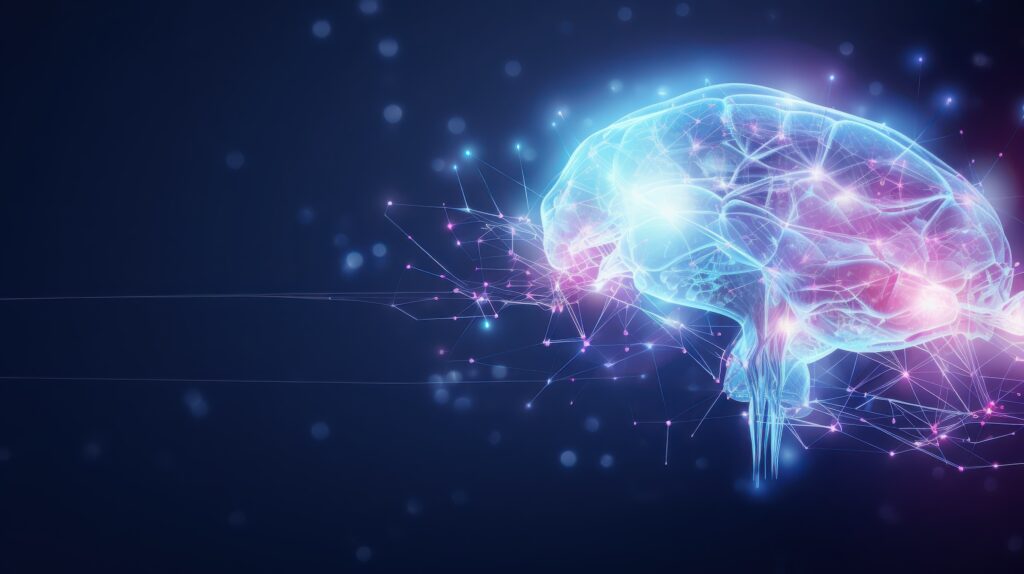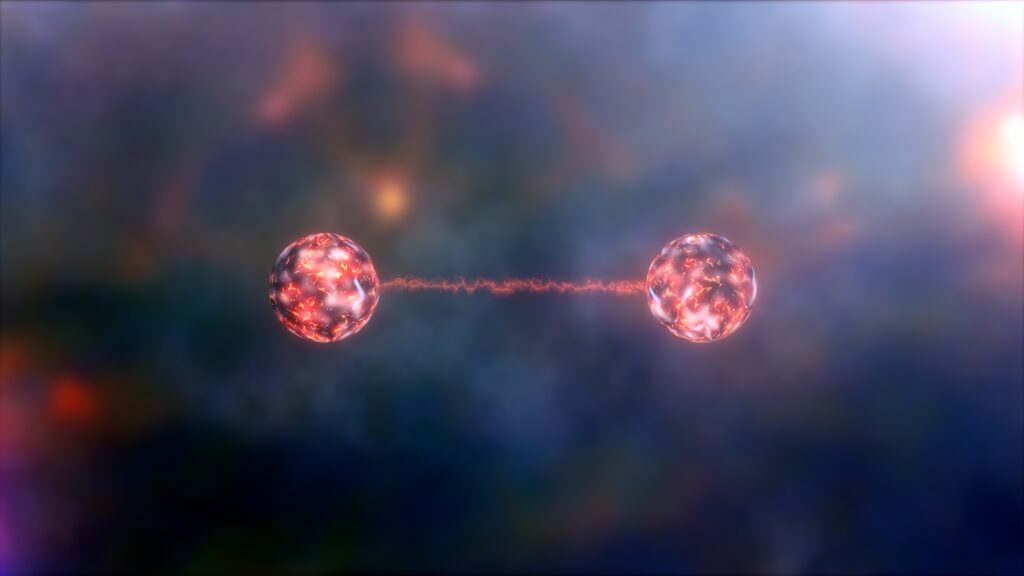What is consciousness?
Reading | Neuroscience
![]() dr. Gerald Woerlee | 2021-02-19
dr. Gerald Woerlee | 2021-02-19

Consciousness is more fundamental than, and precedes, higher-level mental activity such as thoughts and emotions. Therefore, it is possible that consciousness—as a kind of primary ‘operating system’—is present even in the complete absence of recognizable mental activity, argues dr. Woerlee with the authority of an anesthesiologist. We may thus be conscious even during states of seeming unconsciousness, which is relevant for metaphysics—such as idealism—that consider consciousness fundamental.
Consciousness is a much used and abused term, as is clearly revealed by the differing descriptions of consciousness as a phenomenon. Such imprecision is a major barrier to any real understanding of the nature of consciousness. Dictionary and encyclopedia definitions of consciousness even perpetuate this imprecision:
[Consciousness] Is the state of knowing what goes on around one… (Webster Dictionary 1991)
[Consciousness means being] Inwardly sensible or aware… (Shorter Oxford Dictionary 1956)
An extensive review by the neuroscientist Adam Zeman defined consciousness as several states: consciousness as a waking state, consciousness as mind, consciousness as experience, and self-consciousness (Zeman 2001).
The first definition only defines consciousness as knowing and perceiving the external world, while the second defines it as being aware of self, while the third series of definitions is so comprehensive as to be unusable. These definitions actually only define the manifestations of consciousness, such as awareness of self and external perception. They do not explain the nature of consciousness. Definitions such as the above are extensively discussed in a review article entitled Consciousness, by Adam Zeman (2001), as well as in the very readable book, Consciousness: An introduction by Susan Blackmore (2004). Here we read extensive explanations of states of consciousness, manifestations of consciousness, and theories of consciousness. Yet, even Susan Blackmore’s book ends with the revealing question: “But what is consciousness?” So it is worthwhile to examine this much used and abused term to provide some clarity and precision.
Medical definitions of consciousness
Physicians, and especially anesthesiologists, are practical people. They recognize the presence or absence of consciousness, and define the level of consciousness with various systems, because this can be used as a guide to patient management. The oldest methods were definitions using specific terms:
- Obtunded consciousness: is a reduced level of consciousness.
- Somnolent: a somnolent person is excessively sleepy, manifests minimal to no spontaneous activity, responds to calling their name, and responds to external stimuli with incoherent mumblings and uncoordinated actions.
- Stupor: a person in a stupor is stuporose. A stuporose person only responds to shouting their name, repeated shaking, and reflex reactions to pain. The level of consciousness of a “deeply stuporose” person is even more obtunded. A deeply stuporose person does not respond to shouting or shaking, and only reacts to pain with reflex movements. These are reflex reactions to pain such as withdrawing, grimacing, etc. These reactions are quite distinct from directed responses to pain.
- Coma: a person in a coma is comatose. A comatose person does not respond in any way to shaking, shouting, or even intense pain. They also may not manifest other basic brainstem reactions such as gagging in response to stimulating the back of the throat (gag reflex), their pupils may not respond to light (pupillary reflex), they may not close their eyes in response to touching the cornea (corneal reflex), or respond to stimulating their bronchi with a suction tube (cough reflex).
These older definitions have given way to the more precise Ramsay score (Ramsay 1974), and the EMV (Eyes, Movement, Verbal) score. Nonetheless, all these scores rely on physical movements and speech to infer the presence of consciousness. Yet people can be fully conscious even when unable to manifest any signs of consciousness.
Conscious while appearing unconscious
There are multiple situations where people manifest no signs of consciousness even though they are fully conscious and aware. Three examples of consciousness while appearing unconscious are the effects of the drug curare, the “locked-in” syndrome and lucid dreaming.
Curare
Curare, and drugs with the same effects as curare, are used by anesthesiologists every day as part of standard general anesthesia techniques. A sufficiently high dose of curare causes total paralysis of all muscles of the body except those of the bowels, heart and air passages of the lungs. The muscles of breathing are also paralyzed, which is quite lethal, so patients receiving such higher dose of curare are attached to a respirator, which mechanically inflates and deflates the lungs while the drug is active. All patients receiving such doses of curare as part of an anesthetic are administered drugs to ensure loss of consciousness, and other drugs to deaden the pain of surgery. This is everyday work for anesthesiologists all over the world, and also explains the various types of anesthetic awareness (see Chapter 10 in Woerlee 2020)
But a person administered high doses of curare, or curare-like drugs, is fully conscious and aware, with all mental faculties functioning normally. Such paralyzed persons are just unable to breath or move a single muscle. This reveals the above-mentioned scoring systems to be useless in some situations.
“Locked-in” syndrome
The locked-in syndrome is a devastating result of neurological disorders causing damage to that part of the midbrain called the “pons” (Dolfus 1990). These patients are unable to breathe, to move, and appear unconscious. Yet they are conscious, with possession of their normal mental faculties, even though they are generally unable to signal the fact of consciousness; a dreadful situation, and very vividly described by a recovered patient (Chisholm 2005).
Lucid dreaming
During REM (Rapid Eye Movement) sleep, all the muscles of the body are paralyzed except for the muscles of respiration, heartbeat, bladder and bowels. Yet, instead of sleeping and dreaming, some people are fully awake, although paralyzed and unable to move their bodies or speak. This is lucid dreaming.
Lucid dreams typically only occur during REM sleep. During such dreams, people realize they are dreaming and can even control the content of their dreams to some extent. These are very vivid and often profound experiences whose properties consist of: “full awareness of the dream state, awareness of the possibility of making free decisions, clear consciousness of the dreamer, perception by all senses, full memory of waking life, full memory of all lucid dream experiences in the waking state and in the lucid dream state, awareness of the meaning of symbols” (Holzinger 2006). It is during these lucid dreams that some people experience flying dreams or out-of-body experiences. Not only do people undergoing lucid dreams realize they are dreaming, but they can signal the fact they are dreaming. They do so by means of moving their eyes in a prearranged manner, so as to generate signals on recordings of eye muscle electrical activity, or electroencephalographic activity, in response to pre-arranged light or sound signals applied when they are in REM sleep (Holzinger 2006, LaBerge 2010, Voss 2009). Unlike other dreams, self-reflection is present during lucid dreams (LaBerge 2010).
The body is the support system of the brain
This also raises the question of where consciousness originates. Many, many medical phenomena such as amputations, artificial organs, medical techniques of feeding, etc., all indicate and prove that the manifestation of consciousness is intimately tied to the brain, and the brainstem in particular. The medical evidence for this is so vast that I will not enter into it; suffices to indicate a brief review in one book (see Chapter 2 in Woerlee 2005).
The most dramatic evidence for this reality was provided by early clinical reports of severely brain damaged people whose bodies were kept alive, even though their brains were decomposing within their skulls. The results of post-mortem examinations of the brains of some of these people can only be described as dramatic. I quote two examples:
This can be best demonstrated in slides derived from the brain of a 6 year-old girl suffering from tubercular meningitis (Case 1, Table 1). Artificial respiration was necessary two weeks after commencement of the disease, yet the general condition grew worse in the following 9 days and she died two months later. As far as we could ascertain the brain had been dead for two months before the heart stopped. In this period of deanimation necrotic brain substance leaked through burrholes made in the skull. (Kramer 1963)
The following was one of the findings of the post-mortem examinations, as revealed by the general description of the brains of these people after death:
The consistency of the brain is always very weak and the weakening may proceed to such an extent that the brain substance is almost liquid. The colour is a disgusting mixture of grey, green and brown. (Kramer 1963)
The medical record of this unfortunate girl, as well as the examinations of others whose bodies were kept alive and functioning for several weeks after brain death, revealed several important points. They were not sedated nor paralyzed, yet they were very definitely unresponsive and unconscious; they did not breathe, and their brains were dead and decomposing long before the rest of their bodies died (Kramer 1963).
The brains and brainstems of these unfortunate persons were very clearly dead, and they manifested absolutely no signs of consciousness, such as speech or voluntary movement, even though their bodies were capable of movement. Evidence from subsequent brain death studies (Wijdicks 2008), and lines of evidence from other disorders ranging from shooting in the head, blows on the head, etc., all confirm the findings of Dr. Kramer and indicate that the body is no more than the support system for the brain and brainstem, which are the parts of the body needed for consciousness to manifest in any way.
How much brain is needed?
Anencephaly and hydrancephaly are two tragic situations revealing the minimal brain structures needed for consciousness to manifest.
Anencephaly is a condition of babies born without a top of the skull and scalp above the level of the eyes, and without a brain. Such children usually die shortly after birth. However, some are born with a brainstem and thalamus, and some of these survive for several days while manifesting consciousness—defined as waking, sleeping and responses to touch (Nielson 1949, Luyendijk 1992).
Hydranencephaly is a condition of babies born with a normal head, but without brain tissue above the brainstem and thalamus, except some vestigial other brain tissue. Studies of such children reveal varying levels of consciousness—defined as waking, sleeping and responding to stimuli. Other levels of mental development in these children depend upon the amount of other brain tissue (Shewmon 1999).
Studies of these unfortunate children, brain death, and studies of animal brains reveal that brainstem function is required for consciousness to manifest in humans or animals. Furthermore, many animal and human studies reveal the brainstem to be a primary integrator of responses to external perceptions and strongly suggest its role as a possible generator of consciousness (Merker 2007).
How to view consciousness?
From a purely materialist point of view, many medical and biological studies of consciousness indicate that the brainstem is the generator of consciousness. Or from another viewpoint, the brainstem is the conduit of consciousness. But one thing is certain: no brainstem means no consciousness. So how can consciousness be understood in relation to these facts? A statement from the Canadian neurologist Jodie Gawryluk reveals a very insightful observation:
wakefulness refers to the sub-state that permits open eyes and a degree of motor arousal (i.e. wakefulness defines the level of consciousness); awareness refers to the sub-state that enables experience of thoughts, memories, and emotions (i.e. awareness defines the content of consciousness). Although wakefulness and awareness are intimately connected—in general, one has to be awake to be aware—it is possible to identify circumstances under which they are dissociated (Gawryluk 2010)
Put simply, this and all preceding discussions reveal three essential points:
- Consciousness is necessary for the attributes of mind, such as awareness, sensation, personality, intellect, memory and emotion to manifest.
- Wakefulness is a description of the level of consciousness enabling attributes of mind to manifest.
- Millennia of practical observation and decades of neurological studies reveal that the neuroanatomical and neurochemical structure of the brainstem are required for consciousness to manifest. Brain structures above the brainstem are required for the higher-level attributes of mind to manifest.
- Awareness, or rather the perception of stimuli, can be dissociated from consciousness and mind. The brainstem is the primary integrator of perceptions and responses to external and internal stimuli, and such awareness of stimuli can occur without consciousness (Merker 2007). For example, think of autonomic responses to sound, light, pain and touch in unconscious persons.
So what is consciousness?
It is evident from the above discussion that consciousness is not the same thing as awareness of self, awareness of stimuli, personality, intellect, memory, emotion or any other higher-level mental function. The latter is mind, but mind comes on top of consciousness, which may be present even in the absence of mind. The other way around, however, is not possible: mind presupposes consciousness, for the latter is that incredible ‘something’ making mental activity possible. Wakefulness defines merely the level of consciousness. Without consciousness, the body manifests no properties of mind, because an unconscious person manifests no properties of mind such as personality, memory, intelligence and emotions. Consciousness enables these attributes, depending upon the level of wakefulness, and is something very different from these attributes of the mind (Gawryluk 2010, Greenfield 2002).
In this context, consciousness can be viewed analogously to a computer operating system. This metaphor is revealing. It tells us what consciousness is not, and reveals the facilitating and basic role of consciousness in the functioning of mind. There is more: newly born human babies, as well as the newly born form of all animals, are conscious at birth and immediately manifest species-specific, unlearned, and therefore clearly inborn, behavior patterns. This indicates the very real possibility that the neurochemical and anatomical structures related to consciousness are ‘hardwired’ in the very structures of the brainstem and brain.
What does this all mean, and what next?
Consciousness is best viewed as a sort of ‘operating system’ whose manifestations require the ‘hardwired’ neurochemical and anatomical structures of the brainstems of animals and humans, while wakefulness defines the level—or enables the properties—of mind. This concept does not answer the question of the fundamental nature of consciousness. Nonetheless, this defines the neurochemical and anatomical substrate required for the manifestation of consciousness, as well as defining what consciousness is, and is not. This makes any discussion of consciousness more directed.
The physical substrate enabling any manifestation of a conscious mind is clear. Consciousness may indeed be no more than a product of complex neurochemical and neurological activity in the brainstem. But this can only be considered an alternative explanation, because it does not exclude other explanations.
For example, Cartesian dualism is an alternative explanation of consciousness and mind propounded by major religions, and almost universal popular thought for the last 4,500 years. It proposes an immaterial and extracorporeal conscious mind controlling the body (see also pages 65-77 in Blackmore 2004). In this explanation, the brainstem is the material conduit for the manifestation of consciousness by the extracorporeal immaterial mind on this physical world. However, evidence indicates that this concept is no more than an inconsistent, ancient belief system (Woerlee 2020).
There are other alternative explanations of consciousness, such as idealism, panpsychism, emergentism, etc. Other concepts exist, or may come into being. Nonetheless, all such concepts of the phenomenon of consciousness are subject to the same burden of proof, in that they must be consistent with observed reality.
Summing up, achieving any understanding of the mystery of consciousness is only possible by adequate definition and delimitation of what is meant by the term “consciousness.”
References
- Blackmore S, (2004), Consciousness. An Introduction. Oxford University Press, England, ISBN 019515343X.
- Chisholm N, Gillett G, (2005), The patient’s journey: Living with locked-in syndrome. British Medical Journal, 331: 94-97.
- Dollfus P, et al, (1990), The locked-in syndrome: A review and presentation of two chronic cases. Paraplegia, 28: 5-16.
- Gawryluk JR, et al, (2010), Improving the clinical assessment of consciousness with advances in electrophysiological and neuroimaging techniques. BMC Neurology, 10: 11.
- Holzinger B, et al, (2006), Psychophysiological correlates of lucid dreaming. Dreaming, 16: 88-95.
- Greenfield S, (2002), Mind, brain and consciousness. British Journal of Psychiatry, 181: 91-93.
- Kramer W, (1963), From reanimation to deanimation. (Intravital death of the brain during artificial respiration). Acta Neurologica Scandinavica, 39:139-153.
- LaBerge S, (2010), Signal-verified lucid dreaming proves that REM sleep can support reflective consciousness. International Journal of Dream Research, 3: 26-27.
- Luyendijk W, Treffers PDA, (1992), The smile in anencephalic infants. Clinical Neurology and Neurosurgery, 94: Supp. 1: 113-117.
- Merker B, (2007), Consciousness without a cerebral cortex: a challenge for neuroscience and medicine. Behaviourial and Brain Sciences, 30: 63-81.
- Nielson JM, Sedgwick RP, (1949), Instincts and emotions in an anencephalic monster. Journal of Nervous and Mental Disease, 110: 387-94.
- Shewmon DA, et al, (1999), Consciousness in congenitally decorticate children: developmental vegetative state as a self-fulfilling prophecy. Developmental Medicine & Child Neurology, 41: 364-374.
- Wijdicks EFM, Pfeifer EA, (2008), Neuropathology of brain death in the modern transplant era. Neurology, 70: 1234-1237.
- Woerlee GM, (2005),. Mortal Minds: The Biology of Near-death Experiences. Published Prometheus, USA, ISBN 1591022835.
- Woerlee GM, (2020), Anesthesia & the Soul. An ebook available at https://anesthesiasoul.com
- Zeman A, (2001), Consciousness. Brain, 124: 1263-1289.

Essentia Foundation communicates, in an accessible but rigorous manner, the latest results in science and philosophy that point to the mental nature of reality. We are committed to strict, academic-level curation of the material we publish.
Recently published
Reading
Essays
Seeing
Videos
Let us build the future of our culture together
Essentia Foundation is a registered non-profit committed to making its content as accessible as possible. Therefore, we depend on contributions from people like you to continue to do our work. There are many ways to contribute.















